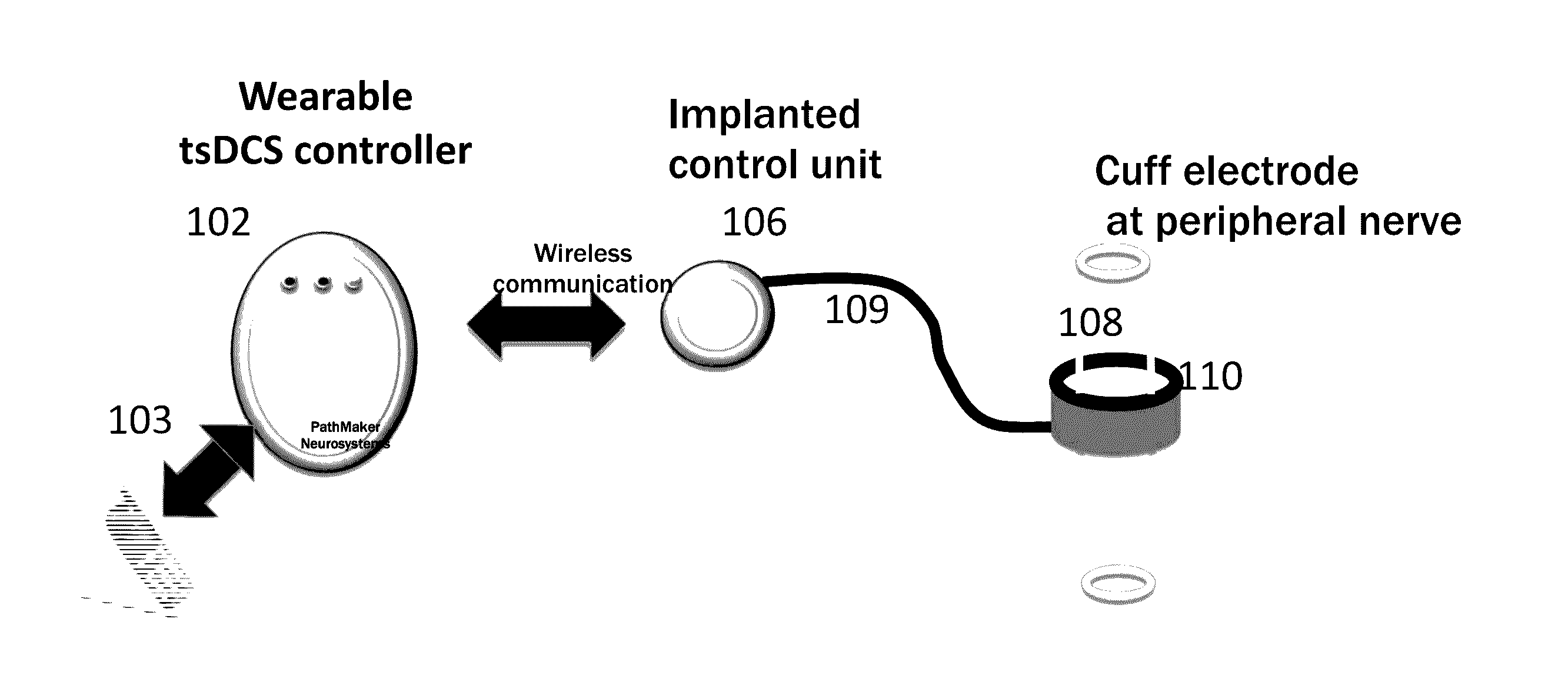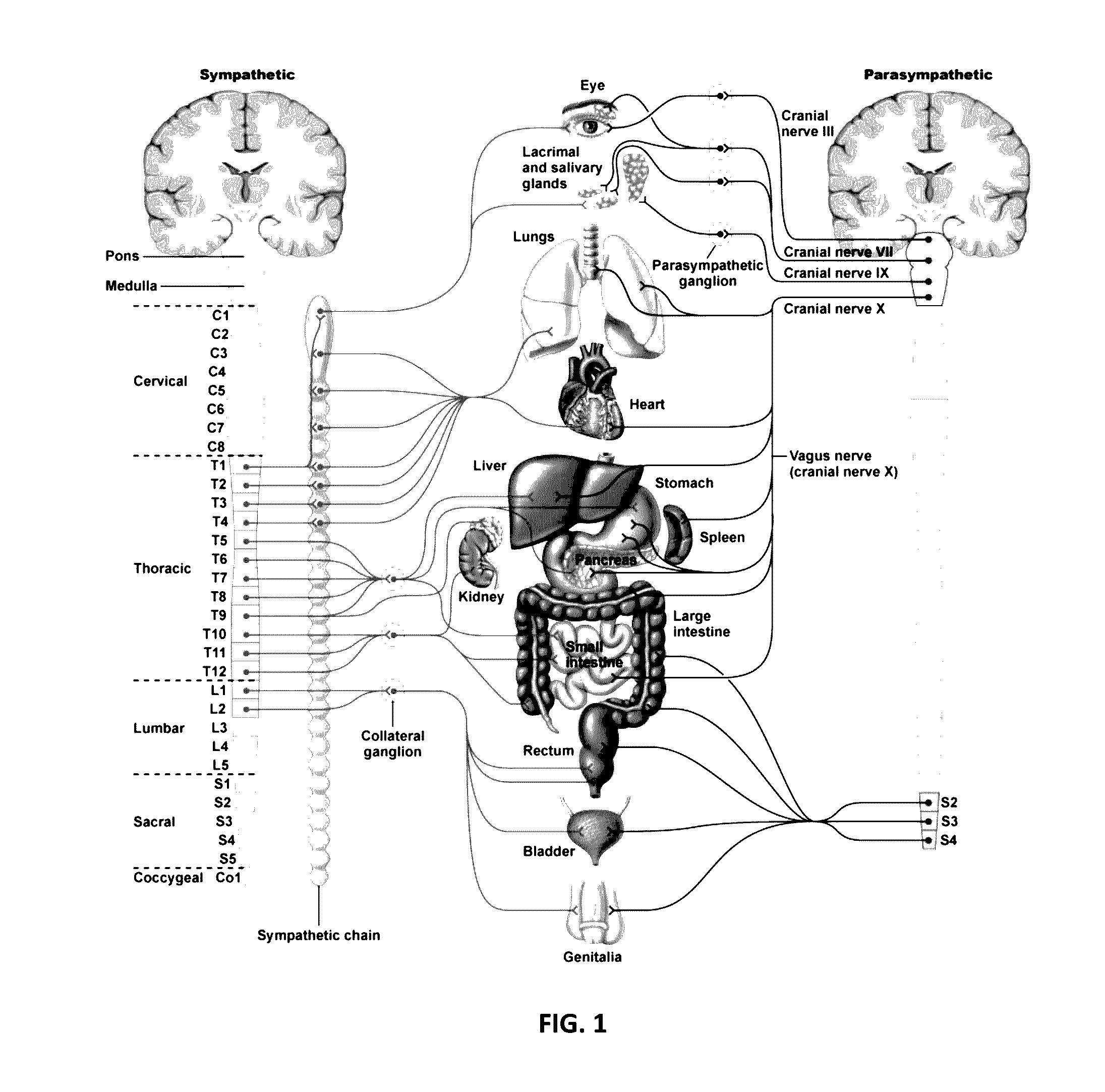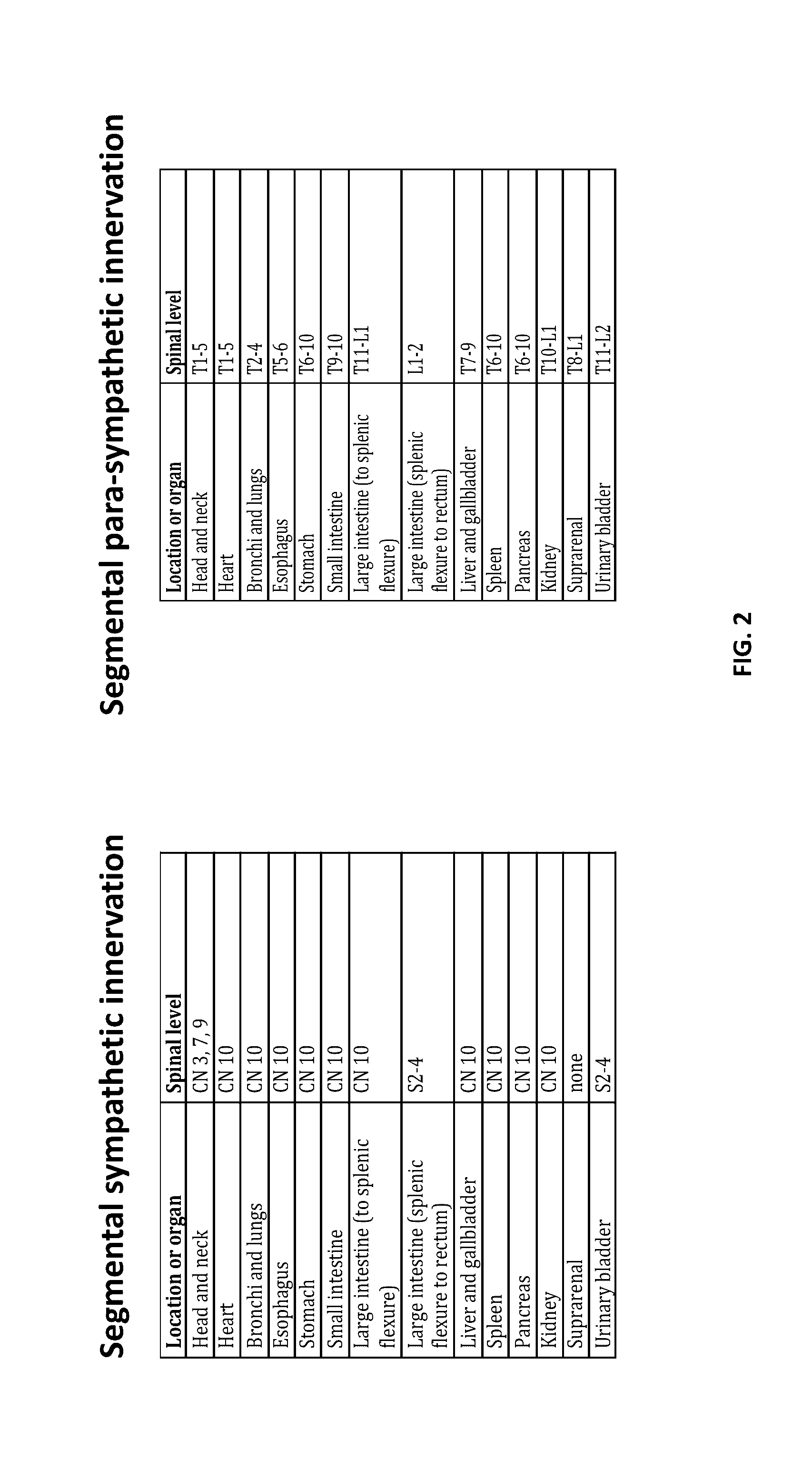Method for modulation of effector organs
a technology of effector organs and nerves, applied in the field of method and apparatus for modulating and regulating autonomically innervated effector organs, can solve the problems of excess sphincter activation, weak bladder contraction and/or contraction, and transection of this sensory nerve reduce the strength and voiding efficiency of bladder contraction, so as to achieve strong cortical signals, effective stimulation of neural pathways, and strong responses
- Summary
- Abstract
- Description
- Claims
- Application Information
AI Technical Summary
Benefits of technology
Problems solved by technology
Method used
Image
Examples
Embodiment Construction
[0047]The description is not to be taken in a limiting sense, but is made merely for the purpose of illustrating the general principles of these teachings, since the scope of these teachings is best defined by the appended claims.
[0048]As used herein, the singular forms “a,”“an,” and “the” include the plural reference unless the context clearly dictates otherwise.
[0049]The following definitions pertain to the present disclosure, with the understanding that such may be modified by context of use. For purposes of the teaching of the present teachings:
[0050]The term “nerves” may be referred to herein as including nerves, neurons, motor neurons and interneurons and the like, and are generally referred to herein as “nerves” or “neurons”;
[0051]The terms or concepts of nerve stimulation and neural stimulation are used liberally and interchangeably to describe applications of the stimulation of the teachings;
[0052]The terms neuromodulation, modulation, stimulation and regulation are used in...
PUM
 Login to View More
Login to View More Abstract
Description
Claims
Application Information
 Login to View More
Login to View More - R&D
- Intellectual Property
- Life Sciences
- Materials
- Tech Scout
- Unparalleled Data Quality
- Higher Quality Content
- 60% Fewer Hallucinations
Browse by: Latest US Patents, China's latest patents, Technical Efficacy Thesaurus, Application Domain, Technology Topic, Popular Technical Reports.
© 2025 PatSnap. All rights reserved.Legal|Privacy policy|Modern Slavery Act Transparency Statement|Sitemap|About US| Contact US: help@patsnap.com



